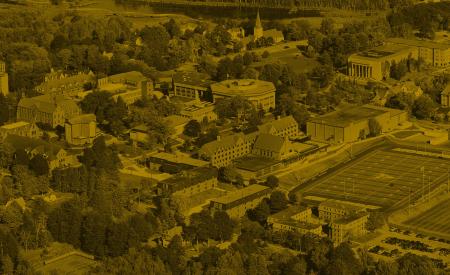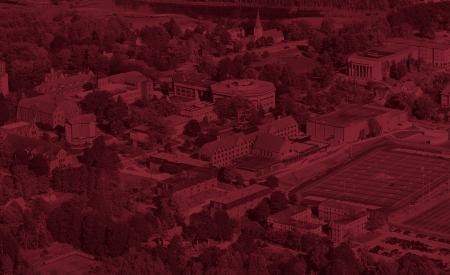Mount Allison's Decolonizing Methodologies course focuses on land-based education
Students in Mount Allison University's Social Research: Decolonizing Methodologies course worked firsthand with Indigenous Elders as part of their curriculum last semester. Under the guidance of professor Chris George and three Wabanaki elders, the class built a version of a Longhouse - a traditional social institution common amongst Wabanaki nations prior to contact with Europeans - on campus this past fall.
 The third-year class was a pilot project in land-based education, a form of decolonizing education that focuses on strengthening students' connection to the land and opening up to forms of knowledge that exist outside books and papers.
The third-year class was a pilot project in land-based education, a form of decolonizing education that focuses on strengthening students' connection to the land and opening up to forms of knowledge that exist outside books and papers.
"We were looking to include and pass along sources of Indigenous knowledge into the course curriculum, including language, culture, and ceremony. The Longhouse represents all three," says George. "This is a good way to educate our settler allies/non-Indigenous supporters about traditional longhouse protocol and governance."
An educator for more than a decade, George is currently completing his doctorate at UNB, focusing on decolonizing education, Indigenous resurgence, and Indigenous language recovery and revitalization. This is his first course at Mount Allison.
When deciding to build a 'mini' version of a longhouse as a class assignment, George asked Wabanaki elders Ron Tremblay, Gkisedtanamoogk, and Miigam'agan who were his teachers to come to campus to help with the learning process.
Elder Miigam'agan of Esgenoopetitj First Nation guided the group in the building of the longhouse.
"I really felt a sense of openness and eagerness for the Longhouse project from the students," she says. "We discussed the significance and process behind the building as well as the important role the matriarch plays in our culture."
The class held a land acknowledgment ceremony before building, led by the Elders, and also learned the protocol of the Longhouse, including the equalitarian system between males and females in the Indigenous community.
"Males and females sit in different parts of the Longhouse, recognizing the values and contributions each brings to the group," explains Miigam'agan. "Men have the role as protectors while the inner circle is made of up children, Elders, and women. Women, as life givers, are viewed as the pulse of the family, community, and nation in our culture. The Longhouse seeks to reflect this."
Following its construction, the students and elders met in the Longhouse and discussed longhouse teachings. The structure was disassembled the following week according to the guidance of the Elders.
Laylia Bennett is a second-year student from Mundleville, NB. She says the class was not like any other class she's ever taken.
"Many other classes I've been a part of are focused on theory, memorization, calculations, etc.," says Bennett. "This class, on the other hand, focused on the actual learning experience. The goal in mind was to ensure that each student took away a really valuable educational experience that will stay with them throughout their lives. It was really quite eye opening."
The group also looked more into the Truth and Reconciliation Commission's calls to actions as part of the course.
"We worked through these plans as a group," says George. "The students explored ways to do this, both in person and online in their communities. Reconciliation is in everything, not just education. That's something we all need to remember going forward, it depends on all of us."



